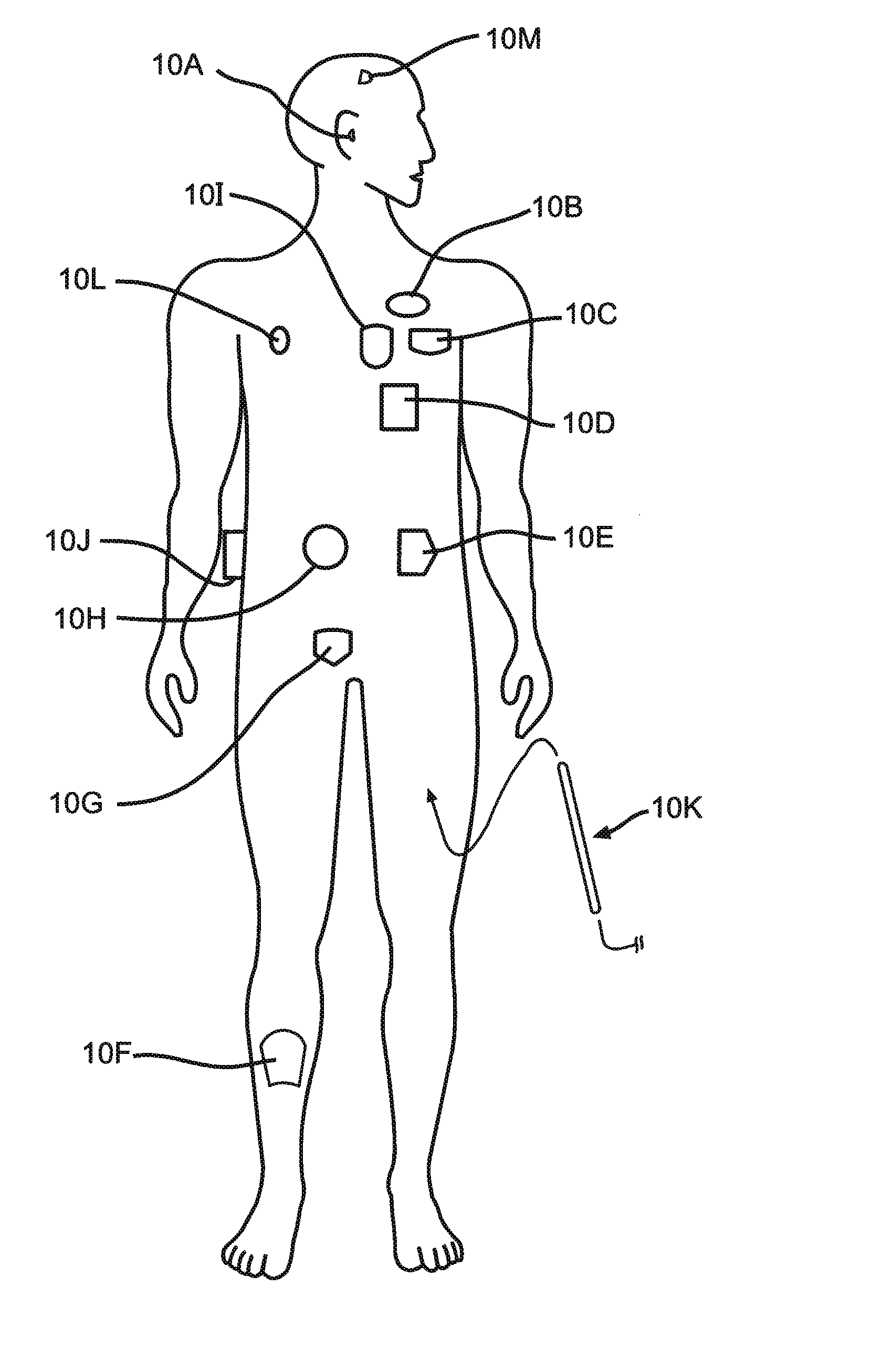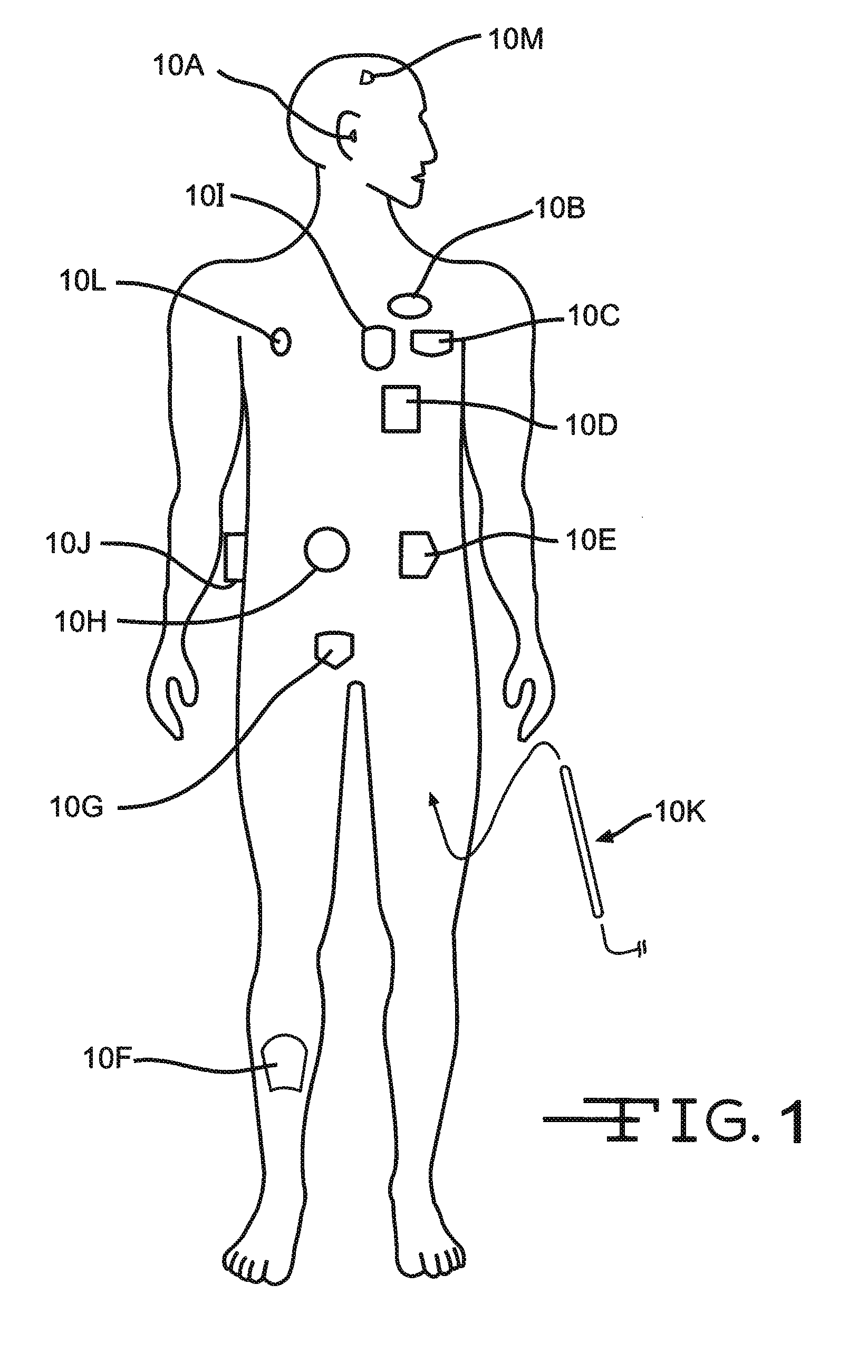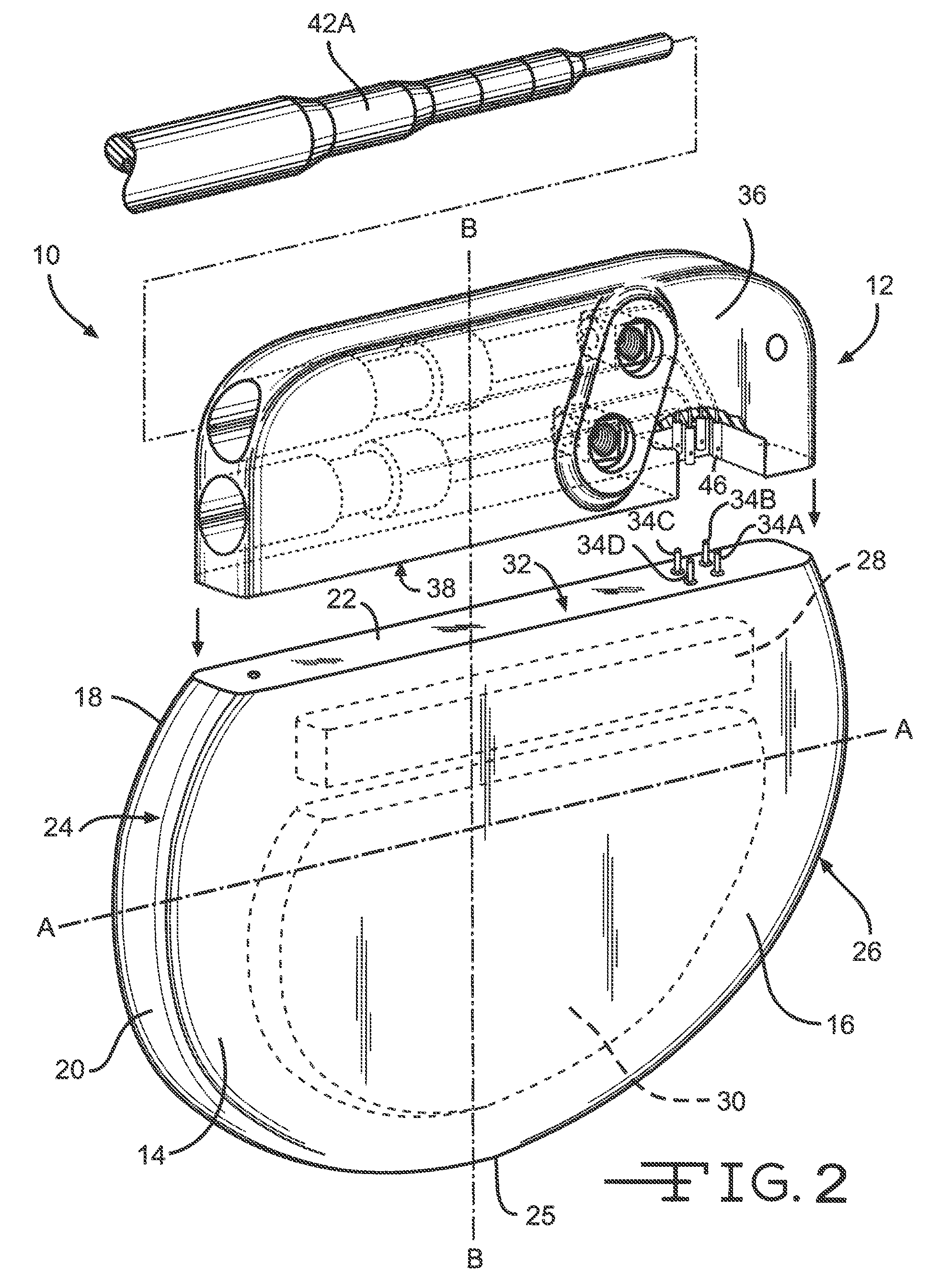Positioning of a medical device conductor in an MRI environment to reduce RF induced current
a technology of mri environment and conductor, which is applied in the direction of magnetic measurement, therapy, instruments, etc., can solve the problems of loss of therapy, overheating of lead and adjacent body tissue, and damage to both myocardial tissue and neurological tissue, so as to reduce the amount of induced rf current and measure the increase in heat along the lead electrode.
- Summary
- Abstract
- Description
- Claims
- Application Information
AI Technical Summary
Benefits of technology
Problems solved by technology
Method used
Image
Examples
Embodiment Construction
[0038]As shown in the drawings for purposes of illustration, the present invention pertains to the placement of a conductor about an active implantable medical device (AIMD) such that induced RF current heating within the medical lead, particularly of the electrodes of the medical lead, of the connected medical device is reduced. More specifically, the present invention concerns the controlled placement of the conductor about the exterior of an implantable medical device, for example as a cardiac pacemaker, a cardioverter defibrillator, or a neurostimulator, such that when the device is placed within an MRI environment, RF current induced heating within its connected lead is reduced.
[0039]The term “conductor” is herein defined as an electrically conductive pathway. The conductor may comprise a single electrically conductive wire, filar, filled via, conductive trace, such as a conductive line deposited on a surface, or may comprise a plurality of electrically conductive wires, filars...
PUM
 Login to View More
Login to View More Abstract
Description
Claims
Application Information
 Login to View More
Login to View More - R&D
- Intellectual Property
- Life Sciences
- Materials
- Tech Scout
- Unparalleled Data Quality
- Higher Quality Content
- 60% Fewer Hallucinations
Browse by: Latest US Patents, China's latest patents, Technical Efficacy Thesaurus, Application Domain, Technology Topic, Popular Technical Reports.
© 2025 PatSnap. All rights reserved.Legal|Privacy policy|Modern Slavery Act Transparency Statement|Sitemap|About US| Contact US: help@patsnap.com



